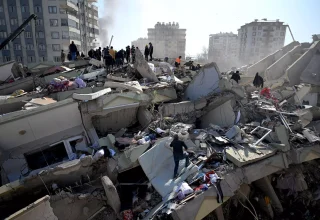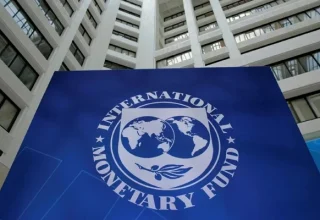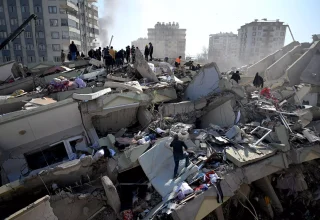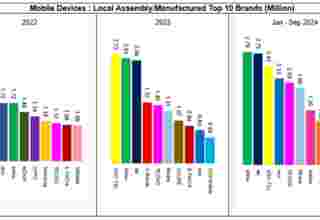SINGAPORE, Oct 7(ABC): Moody’s Investors Service (Moody’s) Thursday downgraded the Government of Pakistan’s local and foreign currency issuer and senior unsecured debt ratings to Caa1 from B3 — after seven years.
Moody’s has also downgraded the rating for the senior unsecured Medium Term Note (MTN) programme to (P)Caa1 from (P)B3. It should be noted that the outlook remains negative.
Commenting on the development, Alpha Beta Core CEO Khurram Schehzad said: “This is surprising that we are downgraded despite having the International Monetary Fund (IMF) support, which indicates the risks still persisting despite having IMF on our side.”
The bond credit rating service said the decision to downgrade the ratings to Caa1 is driven by increased government liquidity and external vulnerability risks and higher debt sustainability risks, in the aftermath of devastating floods that hit the country in June 2022.
“The floods have exacerbated Pakistan’s liquidity and external credit weaknesses and vastly increase social spending needs, while government revenue is severely hit,” a statement issued by the international body read.
The rating agency said that debt affordability, a long-standing credit weakness for Pakistan, “will remain extremely weak for the foreseeable future”.
‘Pakistan will remain reliant on financing from partners’
“The Caa1 rating reflects Moody’s view that Pakistan will remain highly reliant on financing from multilateral partners and other official sector creditors to meet its debt payments, in the absence of access to market financing at affordable costs,” it said.
“In particular, Moody’s expects that Pakistan’s IMF Extended Fund Facility (EFF) programme will remain in place and provide an avenue for financing from the IMF and other multilateral and bilateral partners in the near term.
Moody’s said the negative outlook captures risks around Pakistan’s ability to secure required financing to fully meet its needs in the next few years.
“Elevated social and political risks compound the government’s difficulty in implementing reforms, including revenue-raising measures, that would improve the country’s fiscal position and alleviate liquidity stresses.
“The floods will also raise Pakistan’s external financing needs, raising the risks of a balance of payments crisis. Pakistan’s weak institutions and governance strength add uncertainty around whether the country will maintain a credible policy path that supports further financing,” it said.
Is debt restructuring needed?
According to the statement, the negative outlook also captures risks that, should a debt restructuring be needed, it may extend to private sector creditors.
It should be noted that the Caa1 rating also applies to the backed foreign currency senior unsecured ratings for the Third Pakistan International Sukuk Co Limited and the Pakistan Global Sukuk Programme Co Limited. The associated payment obligations are, in Moody’s view, direct obligations of the Government of Pakistan.
Concurrent with today’s action, Moody’s lowered Pakistan’s local and foreign currency country ceilings to B2 and Caa1 from B1 and B3.
It highlighted that the two-notch gap between the local currency ceiling and sovereign rating is driven by the government’s relatively large footprint in the economy, weak institutions, and relatively high political and external vulnerability risk.
“The gap reflects incomplete capital account convertibility and relatively weak policy effectiveness, which points to material transfer and convertibility risks notwithstanding moderate external debt,” Moody’s said.
Factors that could lead to upgrade/downgrade
Moody’s stated that the negative outlook signals that a rating upgrade is unlikely over the near term. The outlook would likely be changed to stable if Pakistan’s government liquidity and external vulnerability risks decreased materially and durably.
“This could come from access to material external financing that significantly raised foreign exchange reserves. A resumption of fiscal consolidation, including through implementing revenue-raising measures, pointing to a meaningful improvement in debt affordability would also be credit positive,” it read.
Meanwhile, the rating would likely be downgraded if it became increasingly likely that Pakistan was not able to meet its debt obligations.
“In particular, a rising probability that a debt restructuring involved private sector creditors would point to a higher risk of default than consistent with a Caa1 rating,” the statement read.
It said that more generally, higher government liquidity and external vulnerability risks that would threaten the government’s external repayment capacity and balance of payments stability would likely lead to a downgrade.
Moody’s said: “An increase in social and political risks that disrupted policymaking and undermined Pakistan’s ability to secure financing would put further downward pressure on the rating.”
Pakistan near, medium term outlook deteriorates
“Pakistan’s economic outlook in the near and medium term has deteriorated sharply as a result of the floods,” it said, adding that the government’s preliminary estimates put the economic cost of the floods at about $30 billion (10% of GDP), far above the estimated $10 billion economic cost of the 2010 floods, which was until now the country’s worst flooding episode.
The statement added that Moody’s has lowered Pakistan’s real GDP growth to 0-1% for fiscal 2023 (the year ending in June 2023), from a pre-flood estimate of 3-4%.
Moody’s expects growth to pick up next year
“The floods will affect all sectors, with the impact likely more acute in the agriculture sector, which makes up about one-quarter of the economy,” it said, adding that as the economy recovers from the floods, “Moody’s expects growth to pick up next year but stay below trend”.
It stated that the supply shock due to the floods will increase prices further, at a time when inflationary pressures are already elevated.
“The monthly inflation rate averaged 25% from July-September 2022. Moody’s expects inflation to pick up to 25-30% on average for fiscal 2023, compared to a pre-flood estimate of 20-25%.
“The social risks may increase as households face higher costs of living for a more protracted period of time, which would have attendant negative economic and fiscal implications,” the statement read.
It also said that floods are likely to have long-term negative effects on economic and social conditions.
“There is already a significant increase in water-borne diseases, and education is again disrupted for many displaced children not long after schooling resumed following the pandemic.
“The economy’s susceptibility to climate events is captured in Moody’s assessment of highly negative environmental risks, as explained below.”
































